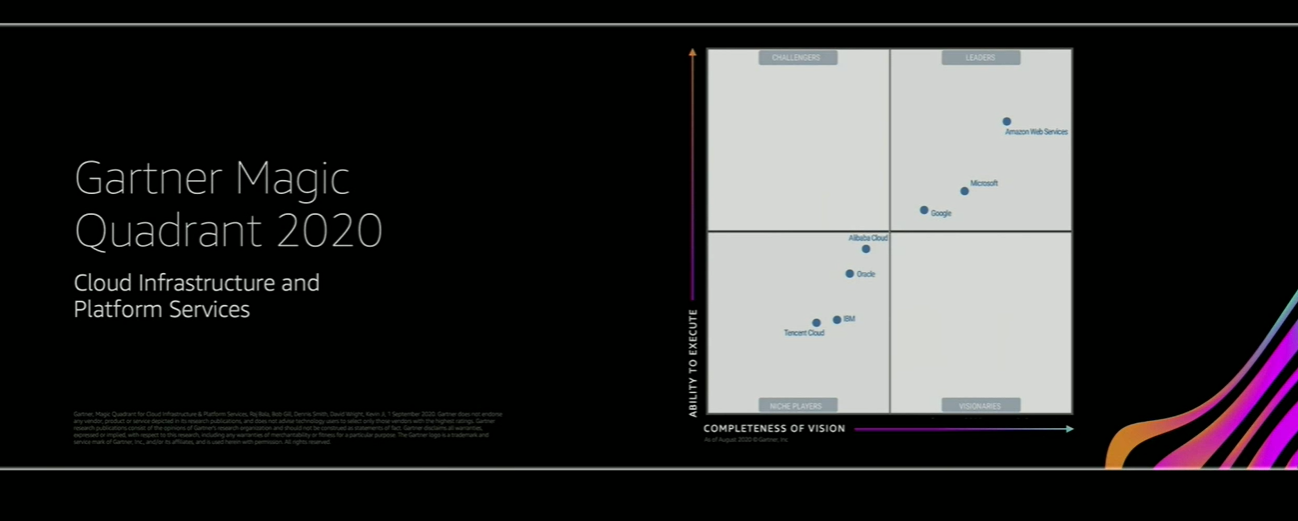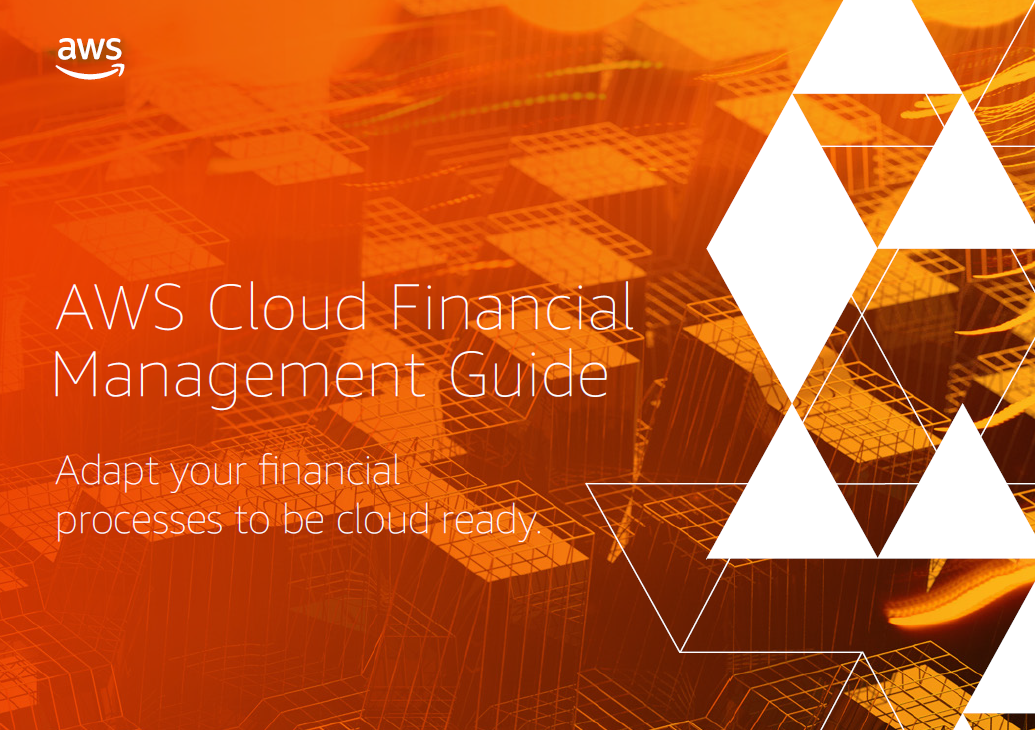AWS Cloud Financial Management
Echoing Andy’s AWS re:Invent 2020 Keynote for Technology Financial Management Success
Andy Jassy officially kicked off AWS 2020 re:Invent with his keynote on Tuesday (Dec.1). More than 30 service launches and previews, covering Compute, Storage, Databases, Analytics, Containers, Customer Engagement, Machine Learning, were announced. At the beginning of the keynote, Andy also addressed the impact of this year’s pandemic on businesses and society, and the fact we are still working on achieving the racial equality.
Two data points in Andy’s speech demonstrate the size, growth momentum, and success of AWS: 1) AWS reached the annual run rate of $46 billion at a 29% YoY growth rate, 2) AWS is recognized as the Cloud Leader for the 10th consecutive year in Gartner’s 2020 Cloud Infrastructure and Platform Services (CIPS) Magic Quadrant report, and the gap between the leader position and the rest is being widened. Note: CIPS is the evolution of the previous Cloud Infrastructure as a Service (IaaS).

Looking back, since I joined AWS back in 2013, when its annual revenue was 3+ billion, it has grown more than 14 times. However, AWS’ growth trajectory is not the norm. History proves that it is hard for companies to sustain for a long period of time.

The key for organizations to stay relevant and successful is the continuous invent and reinvent. Andy went ahead and shared 8 core reinvention guidelines. Digital transformation is fundamental in the reinvention race, which helps organizations better solve business problems and delight customers. However, organizations need effective technology financial management in order to fully realize the value of their technology investment.
Let’s see how we translate Andy’s 8 core reinvention guidelines into ensuring technology financial management success.
1.The leadership’s will to invent and reinvent
First and foremost, leaders need to understand the importance of adapting existing financial processes in order to meet the dynamic nature of cloud technology’s planning and consumption. The executive sponsorship is paramount to establish the right ownership, culture, and mechanisms to deploy and improve the organization’s technology financial management capabilities.
2. Acknowledgement that you can’t fight gravity
Cloud financial management is a very different exercise. Without evolving the traditional financial management processes, organizations will fail to tap into the benefits, such as transparent cost and usage data, automated cost control. But more importantly, organizations will miss the opportunities, such as tracing and allocating cost back to the right business unit or project, centrally governing and managing bills, and factoring cost into architectural design.
3. Talent that’s hungry to invent
Both finance and technology professionals, and more recently “bi-lingual” talents who understand both finance and technology, should be eager to learn more about technology financial management solutions and best practices and help organizations implement the right technology finance management strategies.
4. Solving real customer problems with builders
Technology financial management is more than just controlling the numbers on the books. It should start with real, clear problems, e.g. accurate forecasting, so finance and technology professionals can build solutions to meet the need. They can use out-of-box functions, configure customizable features, build homegrown tools, and a combination of these.
5. Speed
Start early and start small. There is no need to wait till there are perfect financial management strategies, nor is there a perfect strategy or sequential order of where to start first. The key is to start experimenting with what matters the most to your organization. These can be deleting idle resources, choosing the right storage tiers, and adding resources tags.
6. Don’t complexify
There are a variety of technology financial management toolsets available. Start with free, native solutions, and make more investment, as you get more mature and are certain of your needs.
7. Use the platform with the broadest and deepest set
Just as how you have to compromise the functionalities at the lowest denominator, when you spread your workloads across multiple cloud platforms; if you use too many technology financial management tools from different providers at the same time, it will also cause a lot of overhead. Select one or a minimal number of financial management tools that can meet your financial management needs.
8. Pull everything together with aggressive top-down goals
There is always inertia to change, especially for large enterprises where people and processes are so attached to the existing way of doing things. However, with everything mentioned above, let’s set aggressive goals, e.g. eliminate usage waste by 100%, coverage 90% of your AWS compute usage with Savings Plans, and work towards these goals.
AWS Cloud Financial Management Guide
To help you better communicate to your organization about the whys and hows, when you embark on your cloud financial management journey, we highly recommend our recently published “AWS Cloud Financial Management Guide”. As Gopi Krishnan, VP of AWS Finance, said in the foreword, “Finance leaders are strategic partners in this evolution…This means implementing the right financial practices and policies, helping the organization track and see the value of the cloud, understanding what is possible to achieve with new and emerging technologies, and maintaining a competitive advantage in the market”. In this guide, you will learn about why digital transformation requires a shift and evolution in your existing financial management process, how you can adapt, and what AWS solutions can help you succeed. Real-life customer examples are also included.
Hope by reading this guide, you will find something relevant to what your teams are working on now and and can start running your technology as a business. As Jeff Barr, VP of AWS Evangelism, gave the quote in the end, “Cloud Computing is not just technology. It is a tight coupling of technology and a business model”.
